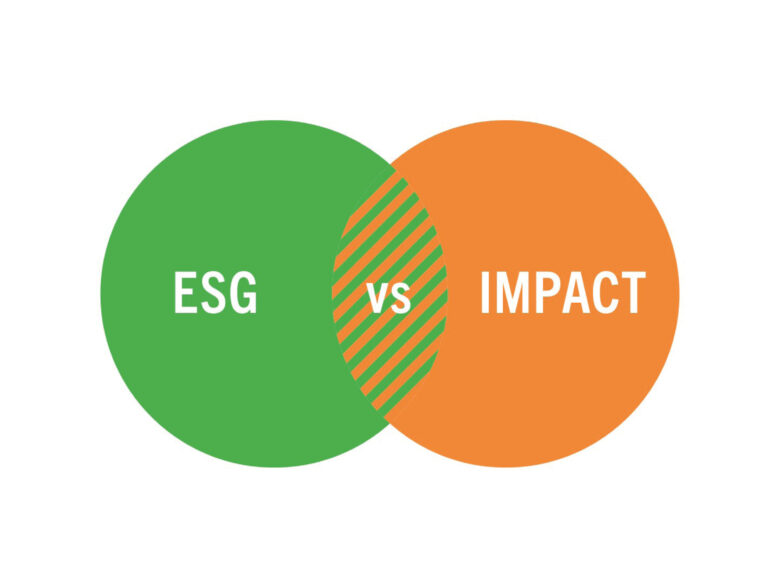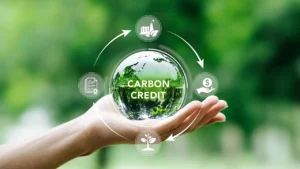Sustainable investing has grown from a niche investment to a common investment strategy that is worth trillions of dollars worldwide. As investors are increasingly seeking to match their portfolios to their values, two major strategies have been developed: ESG investing and impact investing. Both strategies seek to produce positive social and environmental outcomes in addition to financial gains; however, they are distinct in their methodology, measurement criteria, and ultimate goals. This is important because selecting the wrong method to achieve your goals could result in disappointing results or unrealistic expectations.
Defining ESG
ESG is an acronym for environmental, social, and governance aspects that investment managers consider when evaluating businesses and investments. Environmental criteria assess the way a business performs its role as a good steward of the environment as well as their carbon footprint and waste disposal and efforts to conserve resources. Social factors assess how a business handles its relations with its employees, suppliers, customers, communities, and employees. Governance criteria evaluate the quality of leadership and auditing practices, executive compensation, and rights of shareholders.
ESG investing usually involves screening companies using these criteria and deciding on the ones with good ESG scores while staying clear of those that have poor performance. This method typically relies on third-party ratings agencies, which give scores to companies in accordance with the quality of their ESG practices. The main objective is to lower risks and increase return when investing in companies with sustainable practices and responsible management.
Defining Impact Investing
Impact investing is a more straightforward approach to creating positive changes. This method involves investing with the intent of creating tangible environmental or social benefits along with financial gains. Impact investors are constantly looking for opportunities that address particular issues such as climate change, the accessibility of healthcare, poverty, or the gap in education.
Contrary to ESG investment, which is focused on avoiding harm or choosing more efficient companies Impact investing is proactive and focuses on investments that help solve the pressing issues. Impact investors generally set goals for impact and measure the results by predetermined metrics and typically offer lower returns on their investments in exchange for more environmental or social advantages. This type of approach requires more direct involvement as well as detailed impact measurement strategies.
Key Differences
The main difference between ESG and impact investing is in their main goals and methods. ESG investing is primarily designed to reduce negative effects while still delivering high financial returns. It is based on the idea that businesses with solid ESG practices will perform better than their competitors in the long run. This method typically involves massive screening of portfolios and is heavily based on ratings and quantitative metrics.
Impact investing, on the other hand, is focused on bringing about positive change as the primary goal. The financial benefits, though crucial, aren’t the only factor in making measurable impacts. This method requires a more precise investment selection, greater scrutiny, and constant assessment of impact. Impact investors usually concentrate on certain geographical areas or sectors in which they can effect the biggest positive changes.
The methods of measuring differ greatly. ESG investing generally uses standard indicators and third-party ratings to assess firms against broad parameters. Impact investing requires more specialized measurement tools that monitor specific outcomes linked to the desired impact; for example, the number of people who are provided with access to clean drinking water or the reduction in carbon dioxide.
Overlapping Areas
Despite their distinct approaches, ESG and impact investing have a lot in common. Both approaches acknowledge that positive financial results aren’t necessarily mutually exclusive. Both look at social and environmental aspects as crucial to decisions about investments and the long-term creation of value.
Many investors blend elements from both strategies, employing ESG criteria to evaluate their entire portfolio and directing some of their investment to specific impact opportunities. This approach combines both approaches, allowing the investors to match their whole portfolio to their goals while investing in solutions to specific issues.
Both approaches also have similar issues, such as the need for better measurement standards, fears about greenwashing, and the ongoing debate on the balance between financial returns and positive impacts. The rising popularity of both strategies has resulted in greater cooperation between ESG and the impact investing community by sharing best practices and creating advanced methods of measuring.
Benefits and Drawbacks
ESG investing has several benefits that include wide market exposure, established ratings systems, and the capability to provide competitive returns while keeping in line with the values. It’s relatively easy to implement and provides good diversification options. However, it is also afflicted with issues, such as inconsistent methods for rating, the possibility of greenwashing, and the difficulty of assessing the actual impact rather than simply good intentions.
Impact investing gives investors an immediate connection to positive results and lets investors address particular issues that they are interested in deeply. This method provides more transparency in the measurement of impact and could lead to new solutions to urgent issues. Its disadvantages are less financial return, more cost of due diligence, fewer opportunities for investment, and the difficulty of the process of measuring and reporting impact with accuracy.
Making the Right Choice for Your Goals
Deciding between ESG or impact investment is based on your goals as well as your risk tolerance and your desired level of involvement. ESG investing could be more appropriate for investors looking to ensure that their entire portfolio is in line with their goals while retaining broad diversification and a competitive return. Impact investing appeals to investors who wish to solve particular issues while being willing to take fewer returns or more complexity in return for positive changes.
A large number of successful investors utilize these two strategies in a strategic way, incorporating ESG criteria into their primary holdings and committing a small part of their portfolio to specific impact investments. This can result in values being aligned throughout the portfolio while offering opportunities to directly positively impact certain areas of particular interest.
FAQs
1. Do I get profitable returns using ESG investment?
Studies suggest that ESG investing can yield competitive returns in the long term, as companies that have strong ESG practices usually have higher operations and risk management.
2. What can I do to evaluate the impact of my investment?
The measurement of impact must be based on clearly defined goals upfront and utilizing appropriate metrics to measure the progress. A lot of impact investors collaborate with specialist firms that assist in the development and implementation of measurement frameworks.
3. Are ESG ratings valid?
ESG ratings may differ significantly between different providers and do not reflect the actual sustainability performance. It’s necessary to understand the process behind rating and to consider different possible sources.
4. What is the minimum investment needed for the impact investment?
Opportunities to invest in impact investing vary from small-scale investment options available for individual investors to larger institutional investments. Numerous platforms offer an impact investment option with low investment minimums.



